OnePlus 10 Pro has finally launched in India. This is the first OnePlus flagship in eight years that hasn’t debuted in India initially. But that doesn’t change anything. OnePlus 10 Pro is a more powerful, classy looking phone that still goes with the company’s philosophy of Never Settle. But, it hasn’t been without challenges for a company that started its journey where it was the flagship killer and now has become the flagship.
But before I dive into the device. First, let’s talk about why the OnePlus 10 Pro is the start of a new chapter. Something I have been saying for months. Post OnePlus and Oppo merger was announced in June last year, and we never got the usual T-series smartphone in the second half of 2021. But, OnePlus CEO Pete Lau had confirmed this to the media during a post-merger announcement call where he stressed that OnePlus would have a simpler product portfolio where the numbered phones will remain the flagship available globally while the Nord will be a mass-market product that will be designed and targeted to different markets. This makes the OnePlus 10 Pro the first flagship phone to launch post the merger.
The all-new flagship from OnePlus gets it all – the best processor in the Android ecosystem, the best wired charging speed, the best display I have used on an Android phone, and the biggest price tag on a OnePlus phone yet. So, is the OnePlus 10 Pro worth that money? I will try to answer that in my OnePlus 10 Pro review.
OnePlus 10 Pro Review: Much needed design refresh
OnePlus 10 Pro is a big refresh from the company’s previous designs. While the OnePlus 7 Pro and 8 Pro didn’t see any groundbreaking change, the OnePlus 9 Pro brought a slightly different take on how the rear cameras were placed. On the contrary, the OnePlus 10 Pro is a complete revamp.
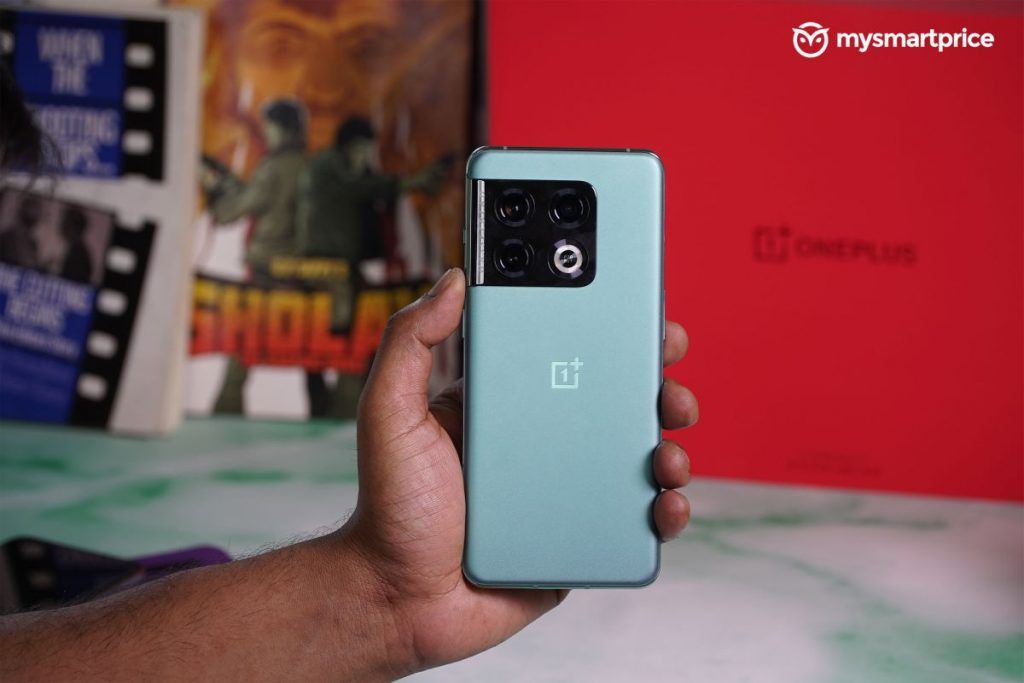
The redesigned camera setup seamlessly merges into the device’s aluminium frame looks great. However, this isn’t something we have not seen. Samsung tried this with its Galaxy S21 series last year. Much like Samsung, OnePlus has so far seen mixed responses from experts. But, in the real world, the rear design feels unique and something that sets it apart from the rest of the crowd. Yes, the big camera housing feels unnecessary at times and also gives you a feeling of whether the weight distribution is managed well or not. But that’s where the magic is.
The hand feel of the OnePlus 10 Pro is fantastic. The phone weighs just over 200 grams on paper, but in reality, it feels less. Kudos to the design team that has managed the weight distribution so well that at no point during the review did I think that the device was too heavy.

With a hefty 5000mAh battery under the hood, the 10 Pro does have weight but is something that you can excuse because you get a decently sized battery unit.
Starting with the front, the OnePlus 10 Pro gets a smaller bezel on the bottom while the top houses the selfie camera on the left. The front camera placement is the same as the OnePlus 9 Pro. The slightly curved display feels nice, while the curved edges sit well in the palms.
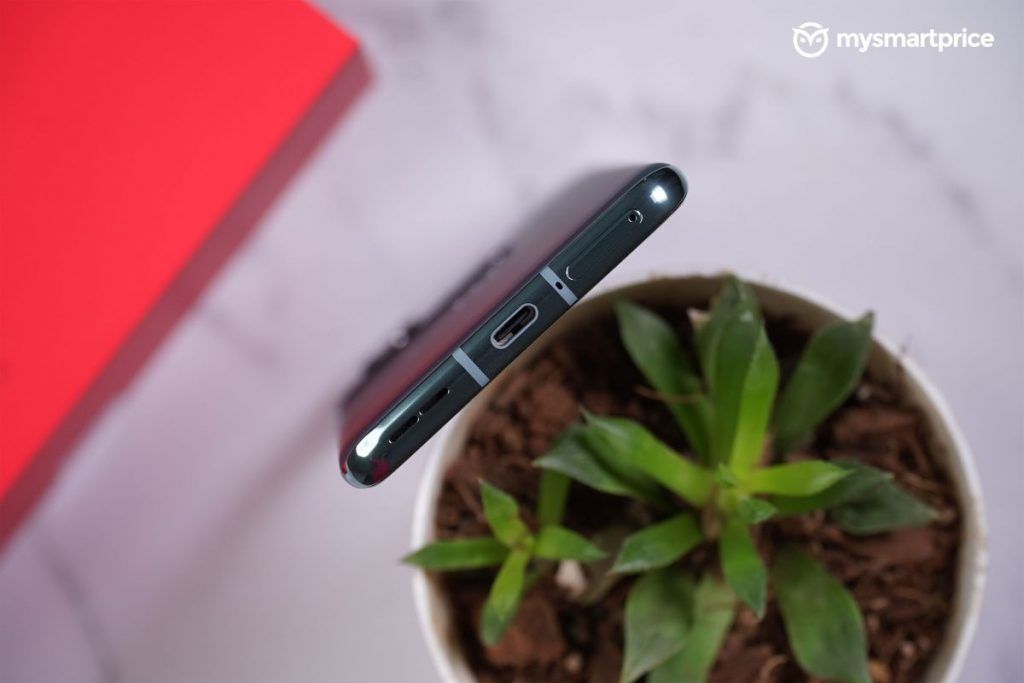
The OnePlus 10 Pro is the first OnePlus device with Corning Gorilla Glass Victus as a cover glass. Much like the signature OnePlus design, the 10 Pro gets an alert slider on the right and a power button that’s placed well around in the middle. The volume rocker buttons are on the left side. The antenna bands can be seen running across the sides. The bottom panel has the USB 3.1 Gen 1 Type-C charging port, dual SIM card slot, and the speaker grille.
The phone is available in Emerald Forest and Volcanic Black colours. I got the former, and it looks good. It receives an anti-glare glass on its rear that is easy to click, unlike many phones with glass backs these days. The best part is it’s resistant to fingerprints. However, I prefer the Glacial Green colour that we saw on the OnePlus 8 Pro.

Another element at the back that adds a premium quotient is the ceramic covered camera module that also adds resistance against everyday scratches. However, I wish that OnePlus added some coating on the module because it is a fingerprint magnet. Every time I picked up the handset and turned to the back panel, I noticed the smudges around the camera module. The rear camera module has Hasselblad branding on the corner, while there’s a P2D50T written in the LED flash’s centre. While the explanation is as complicated as you expect. OnePlus says P stands for the phone while 2D refers to the second-gen Hasselblad camera, and lastly, 50T is a 50-megapixel triple rear camera setup.
Overall, the OnePlus 10 Pro is a solid phone. It offers a good grip in the hands for one-hand use, such as typing, calling or clicking photos. In addition, it feels better than its predecessor when it comes to the design department, especially the way 10 Pro rear camera module wraps around the side.

The retail box ships with a back case that feels better than the transparent case that ships with phones these days. Other items in the retail box include the 80W SuperVOOC power adapter, Type-C cable, SIM ejector tool and quick start guide.
OnePlus 10 Pro Review: Best display experience
When it comes to displays, OnePlus has been a very consistent brand. And the good news is that the OnePlus 10 Pro is no different. You get the familiar 6.7-inch Fluid AMOLED QHD+ display with a 120Hz refresh rate. In addition, the 10 Pro comes with an adaptive refresh rate, which means it varies between 1 to 120Hz using second-gen LTPO tech, which helps extend battery life. The 1440×3216 pixels screen resolution and 525 PPI pixel density are the same as we got on the OnePlus 9 Pro last year. However, what’s new is the cover glass. The 10 Pro gets the Corning Gorilla Glass Victus, which is a first for the OnePlus.

There are tons of display features that you can find on spec sheets or company websites. But, what you won’t find is how does it look? In the real world, the OnePlus 10 Pro packs one of the best displays you can get on modern-day Android flagships. It’s bright and can offer a peak brightness of 1300 nits, which is incredible. Colours are punchy, while texts appear crisp. The sunlight legibility is also excellent and offers good viewing angles. It’s a great display to binge-watch shows or YouTube videos. You can’t go wrong with the OnePlus 10 Pro in the display department.
Coming to the audio performance, the 10 Pro packs dual stereo speakers with Dolby Atmos. The placement is, as usual, one integrated within the speaker on top of the display and the other on the bottom panel. I tested the speakers with plenty of genres, and they sound great. The speakers do get slightly muffled at higher volume, and you do not feel the bass, but then you might as well use earphones or Bluetooth speakers for a better audio experience. The only slight problem with the speakers is their placement. The bottom-firing speakers can get blocked while gaming or even while watching any multimedia in horizontal mode.

OnePlus 10 Pro Review: Living up to the Pro moniker
OnePlus flagships have always offered industry-leading processors. And, following the tradition, the OnePlus 10 Pro also gets the top tier Snapdragon 8 Gen 1 processor under the hood. However, in case you have used OnePlus 9RT or the OnePlus 9 Pro, there are chances that you will hardly notice any upgrades in terms of performance. The Snapdragon 8 Gen 1 brings updates, but those can be hardly seen during everyday tasks.
Coming back to the performance of the 10 Pro, the new OnePlus flagship is quick. The app launches are fast, and the phone boots up in less than 18 seconds. Be it multitasking, gaming or any other task, the OnePlus 10 Pro can handle all of it without a sweat. While testing, I noticed that the phone does get warm while gaming but nothing that makes the device uncomfortable to hold.

The company explained how the all-new multi-layer heat dissipation system works during the product briefing. I could notice the efficient heat management system during gaming sessions. No surprises for guessing, the OnePlus 10 Pro can run Battlegrounds Mobile India and Call of Duty: Mobile at their highest game settings. In addition, the Hyper Boost mode amplifies your gaming experience and is a decent addition for gaming enthusiasts.
The device offers up to 12GB of RAM and up to 256GB of storage, which is what OnePlus offers on its top-notch devices. Where the phone sets, a benchmark is in haptic feedback. If you love to play games on your phone, you will enjoy the haptic feedback on the device. OnePlus has set a perfect example in terms of haptic feedback to all device makers who target gamers by saying, “This is how to do it”.
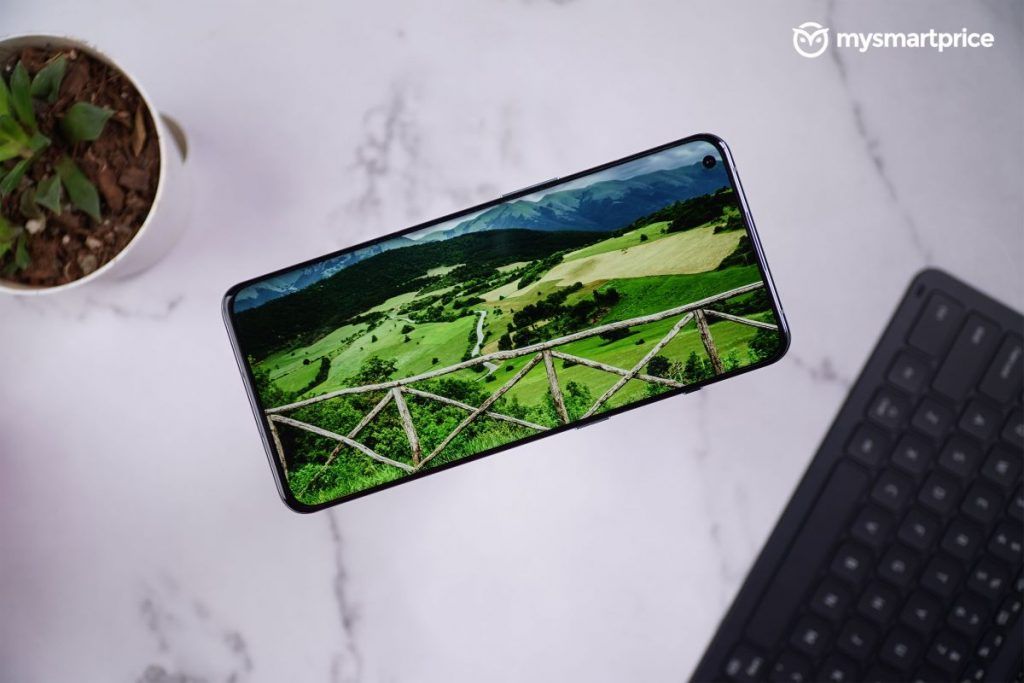
Of course, we ran our set of benchmark tests, and the results, as expected, are some of the best we have seen. On AnTuTu, the 10 Pro scored an impressive 978,000, while on GeekBench 5, it scored 1210 in single-core and 3430 multi-core tests. On 3D Mark Wild Life Unlimited, the phone scored 6500.
Even the fingerprint scanner on the OnePlus 10 Pro is quick and has been positioned higher on the device to improve reachability. Face unlock is lightning quick as well.
The OnePlus 10 Pro is an excellent device for network reception, and I didn’t notice any network problems. I used the 10 Pro with Jio and Airtel SIM cards for calls, messages, and networks tests.
OnePlus 10 Pro Review: Excellent main camera, and that’s about it
OnePlus 10 Pro sports a triple camera setup where the 48-megapixel Sony IMX789 is the same powerful sensor we saw on the OnePlus 9 Pro. The primary camera gets PDAF, OIS, EIS, and an f/1.8 aperture. It can shoot videos up to 4K at 120fps. The second sensor is the 8-megapixel telephoto sensor, again the same we saw on the OnePlus 9 Pro. The biggest change this year is with the ultra-wide sensor, which is the Samsung JN1 50-megapixel, replacing the Sony IMX766. The selfie camera has also received a bump and is a 32-megapixel Sony IMX615 sensor. Not to miss, the 10 Pro comes with the second-gen Hasselblad camera.
Enough with the camera specifics. Now let’s dive into camera performance.
Starting with the primary 48-megapixel camera, this particular sensor is the phone’s biggest strength. Be it daylight or indoor shots with good artificial lights; the 10 Pro impressed with the results. The image samples we got had richer details, excellent dynamic range, and reduced noise. In addition, the shots had accurate colours.
The ultra-wide sensor was the one that I felt was letting the phone down. I could notice the colour difference between wide, telephoto, and ultra-wide shots. For example, the shots below have been taken on the same day using wide, telephoto, and ultra-wide sensors, and you can very well see the difference.
The low-light images come out fine, though you can notice enough noise on the corners and even missing details when zoomed in. The Night mode does help somewhat, but mostly, when someone uses the phone for point and shoot, they won’t go that far, especially if it’s a moment of the day shot.
Selfies come out good during the day. The colour accuracy and skin tone are well maintained. However, the front camera performance takes a bit of a toll in low light. But I hope that’s something OnePlus can take care of with OTA updates.
There are multiple modes like the fisheye mode that offers digitally created fisheye effect shots. Good to play with initially. The portraits come out well with objects, people, and even pets. The Hasselblad Pro Mode is a goldmine and offers enough custom tools for pro users.
The OnePlus 10 Pro doesn’t ship with a macro sensor, so clicking close up shots can be tricky. I tried to click some close-up shots and noticed that the phone was hit-and-miss.
Cameras on OnePlus phones have come a long way, thanks to the Hasselblad partnership. However, the ultra-wide camera on the 10 Pro is slightly disappointing. Overall, in the camera department, the OnePlus 10 Pro scores less than its predecessor, the OnePlus 9 Pro.
OnePlus 10 Pro Review: OxygenOS is here to stay
One of the big surprises for OnePlus enthusiasts has been the decision to drop the unified OS idea. While everyone in India almost got prepared to see a merged OS on the next OnePlus flagship, including the best from OxygenOS and ColorOS on top. Gladly, the OnePlus 10 Pro runs OxygenOS 12.1 based on Android 12. However, a few UI elements remind you of ColorOS, but you have to live with that. In addition, there are tons of small updates, including the OnePlus Shelf, Work-Life Balance 2.0, enhanced Dark Mode, and more.
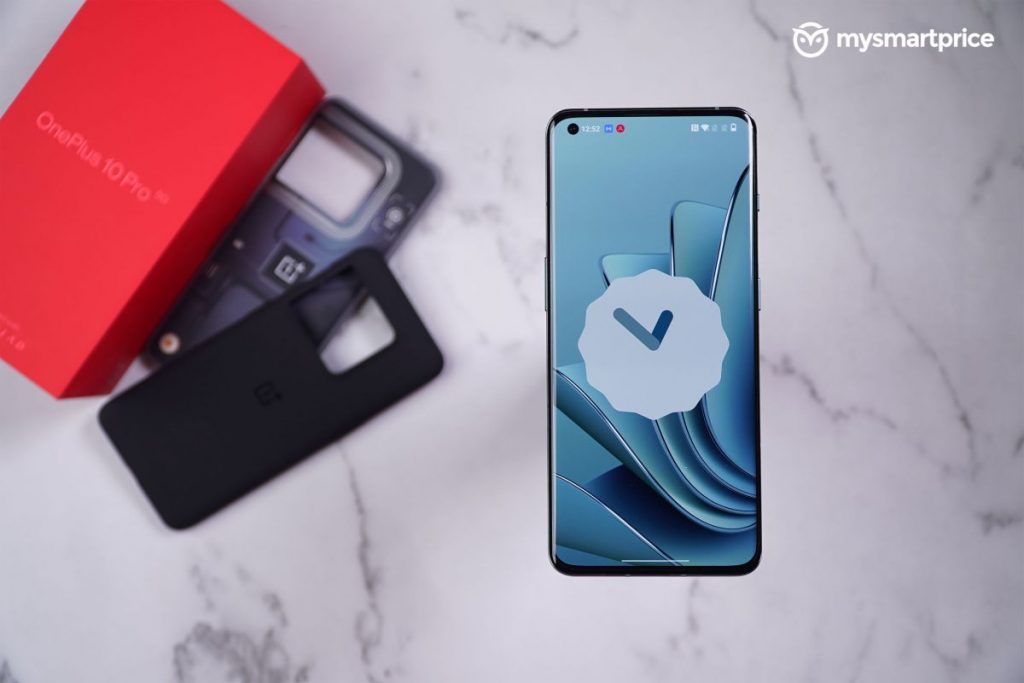
Starting with the Dark Mode, the OnePlus 10 Pro gets customisable dark modes that offer users to choose from gentle, medium and enhanced. Then, there are redesigned OnePlus Shelf and Scout search features. The company has integrated OnePlus Scout into the Shelf, allowing users to find any content on the device, including contacts, documents, and music tracks. The Canvas always-on display has also received some upgrades. The Work-Life Balance 2.0 offers two toggles between two app notification profiles: Work and Life. This way, users can manage app notifications to minimise distractions.
Overall, the OxygenOS 12.1 feels more refined and cleaner than the other custom UIs like MIUI, Funtouch, and ColorOS.
OnePlus 10 Pro Review: Big battery, super quick charging to blow you
If there’s a department that has seen a significant bump, then it has to be the battery and charging speed. The OnePlus 10 Pro packs a 5000mAh battery, the same battery size as Samsung Galaxy S22 Ultra. Notably, it has a bigger battery unit than what we got on the OnePlus 9 Pro (4500mAh) last year.
The real-world difference is significant. I got a screen-on time of over 8 hours on the OnePlus 10 Pro, which is crazy. Talking about apps, I had all everyday apps open (WhatsApp, Telegram, Instagram, Facebook, Outlook, Gmail, Twitter, Notes app, and YouTube) in the background, apart from a couple of hours of gaming (BGMI and Call of Duty) and camera app open for taking sample shots and videos. By the end of the day, the phone had over 30 per cent battery.
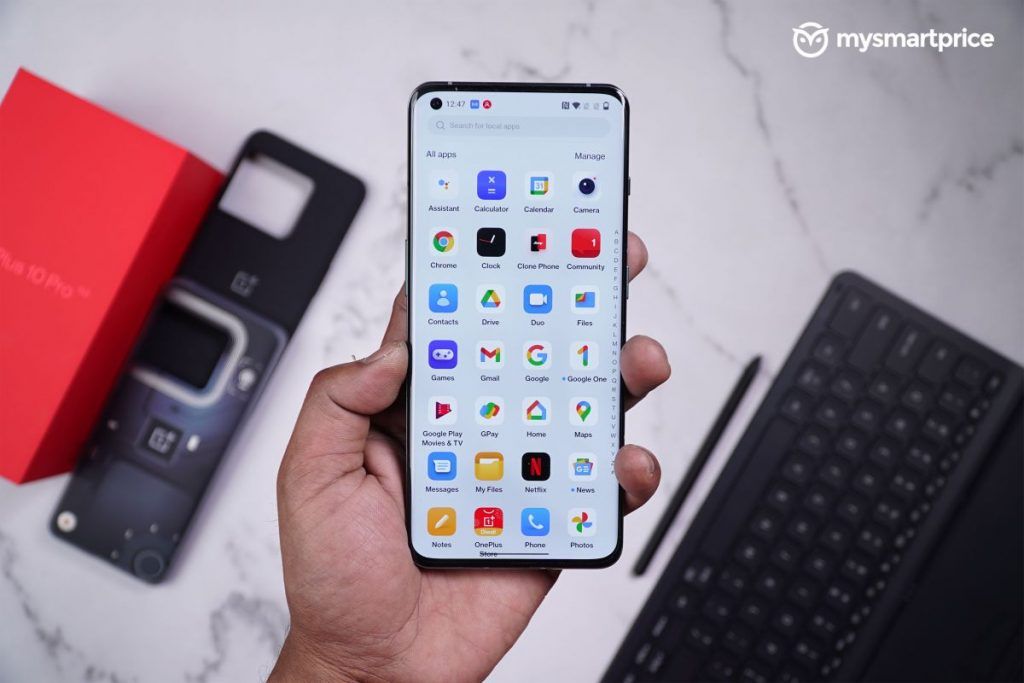
I got roughly 28 hours of battery backup on the OnePlus 10 Pro, even with heavy usage. But, the real star of the battery department is the 80W SuperVOOC fast charging support. Yes, you read that right! This makes OnePlus 10 Pro the first device to ship with an Oppo charger.
The phone charges fully in less than 35 minutes, while a quick charge of 20 minutes gives about a 60 per cent boost to the battery. The 80W charger changes the game in the premium tier and is an excellent add-on for the overall package. Especially considering not all premium phones do ship with a charging adapter now.
Should you be worried about the bendgate issue? Absolutely, no!
OnePlus 10 Pro was in the news soon after its China launch because of a video that showed the bendgate issue. Now, I don’t need to get into the details of that video, but after using the device for a few weeks and moving around with it. What I have learnt is that the OnePlus 10 Pro isn’t a device that you can bend until you want to. Our review tests aren’t just about camera, software, gaming and battery. We use the device day in and day out, which helps us understand the pros and cons of a device, including durability of the device. The 10 Pro’s design is a mixture of glass and aluminium frames that is as tough as any modern-day flagship. So, if you even have a small doubt, drop it.
Okay, now that I have acknowledged the elephant in the room. It’s time to move on to the next big factor, and that’s the price.
OnePlus 10 Pro Review: Verdict
At a starting price of Rs 66,999 (8GB RAM + 128GB storage), the OnePlus 10 Pro goes up against a host of premium devices in India which I will talk about in a bit. But, to summarise, the OnePlus 10 Pro brings a lot to the table – Snapdragon 8 Gen 1 chip, 80W fast charging support and the adapter ships with the phone, 6.7-inch QHD+ display, and 48-megapixel triple camera setup. Not to forget, the OxygenOS is here to stay and is a popular Android skin.
Some of the biggest strengths of the device are its performance, display, battery, and primary camera are among the best out there. Unfortunately, I can’t say that for all sensors. The ultra-wide camera, in particular, doesn’t impress. But, then, the missing IP rating is slightly a heartbreak. It’s a feature that is always good to have. Not to forget, OnePlus will also need to tighten its update cycle for both OS and security updates. I also think that it’s about time that OnePlus starts shipping a 512GB storage variant with its flagship phones.
The OnePlus 10 Pro price goes up to Rs 71,999 for the 12GB RAM and 256GB storage model, which you can go for if you need the extra storage or the 128GB storage is more than enough. Like every new year, the 10 Pro is now the most premium OnePlus phone. But, it still undercuts the competition in terms of pricing.
Coming to the rivals, there are the Samsung Galaxy S22 (Rs 72,999) and S22+ (Rs 84,999), which retail at even higher prices but also ship with decent cameras. Then, we have the iPhone 13 at Rs 79,900, but then specs-wise, it’s way below the OnePlus 10 Pro.
The post OnePlus 10 Pro Review: The top tier phone for the money appeared first on MySmartPrice.
from MySmartPrice https://ift.tt/O9lqegM








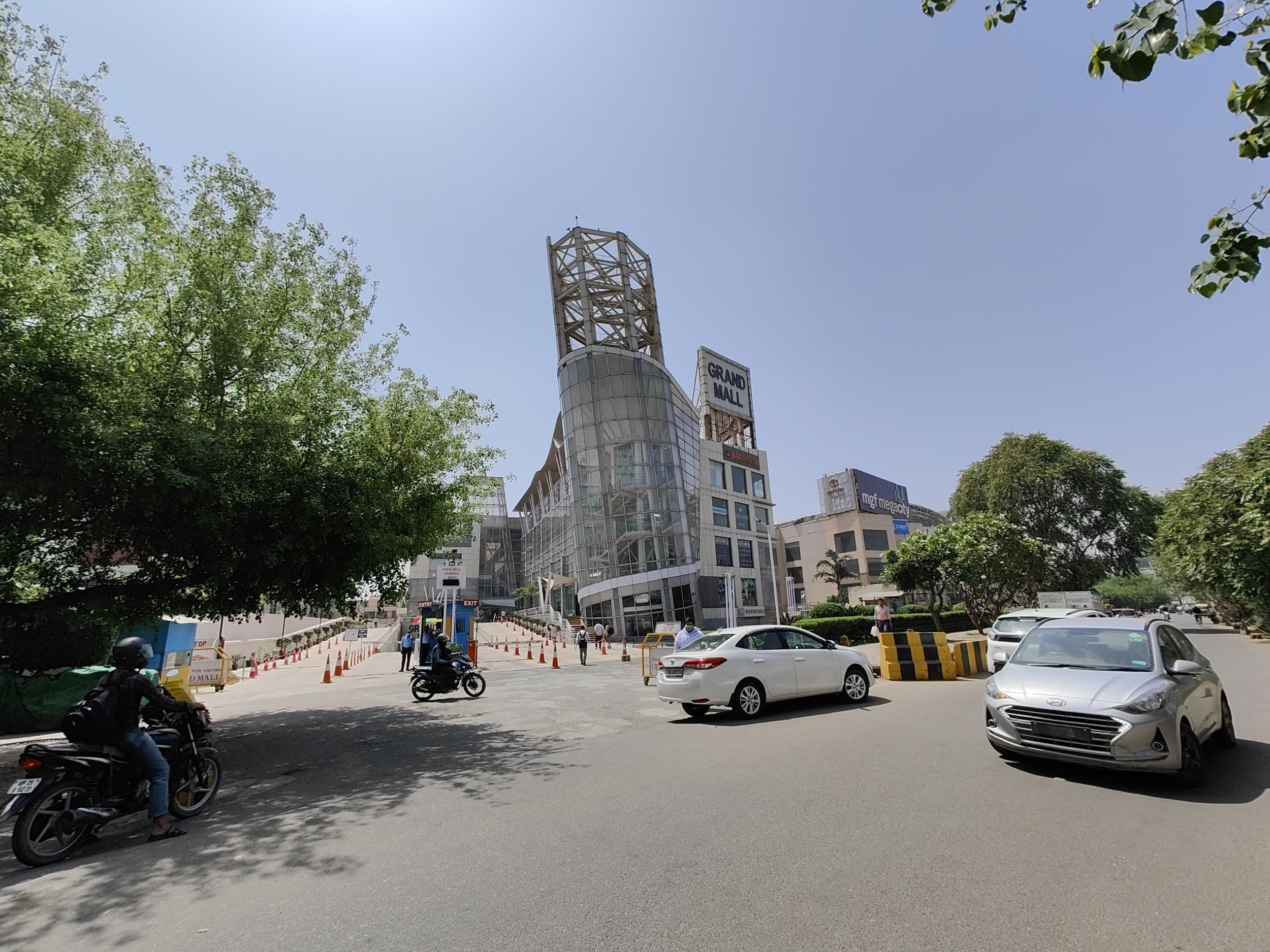













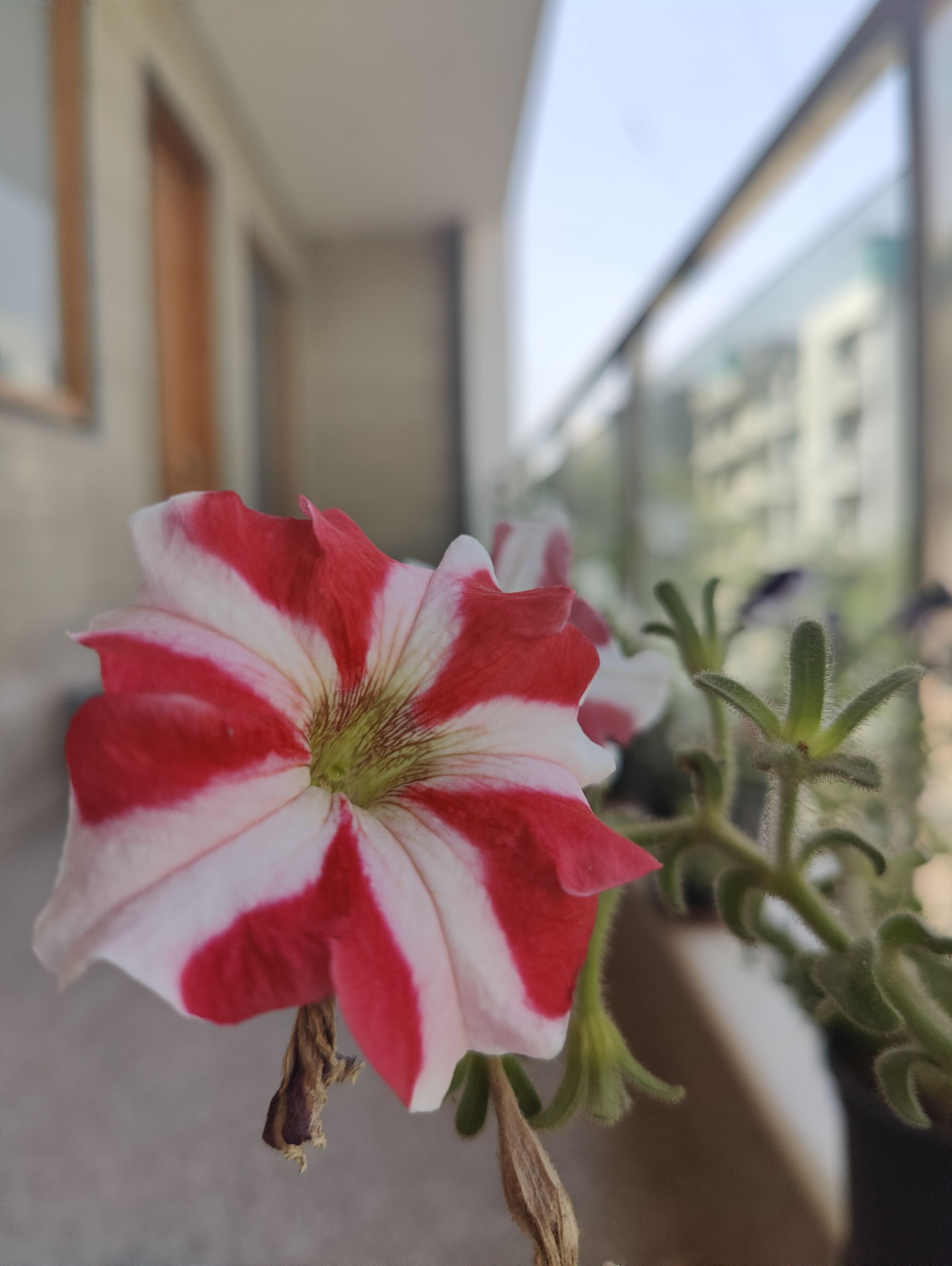






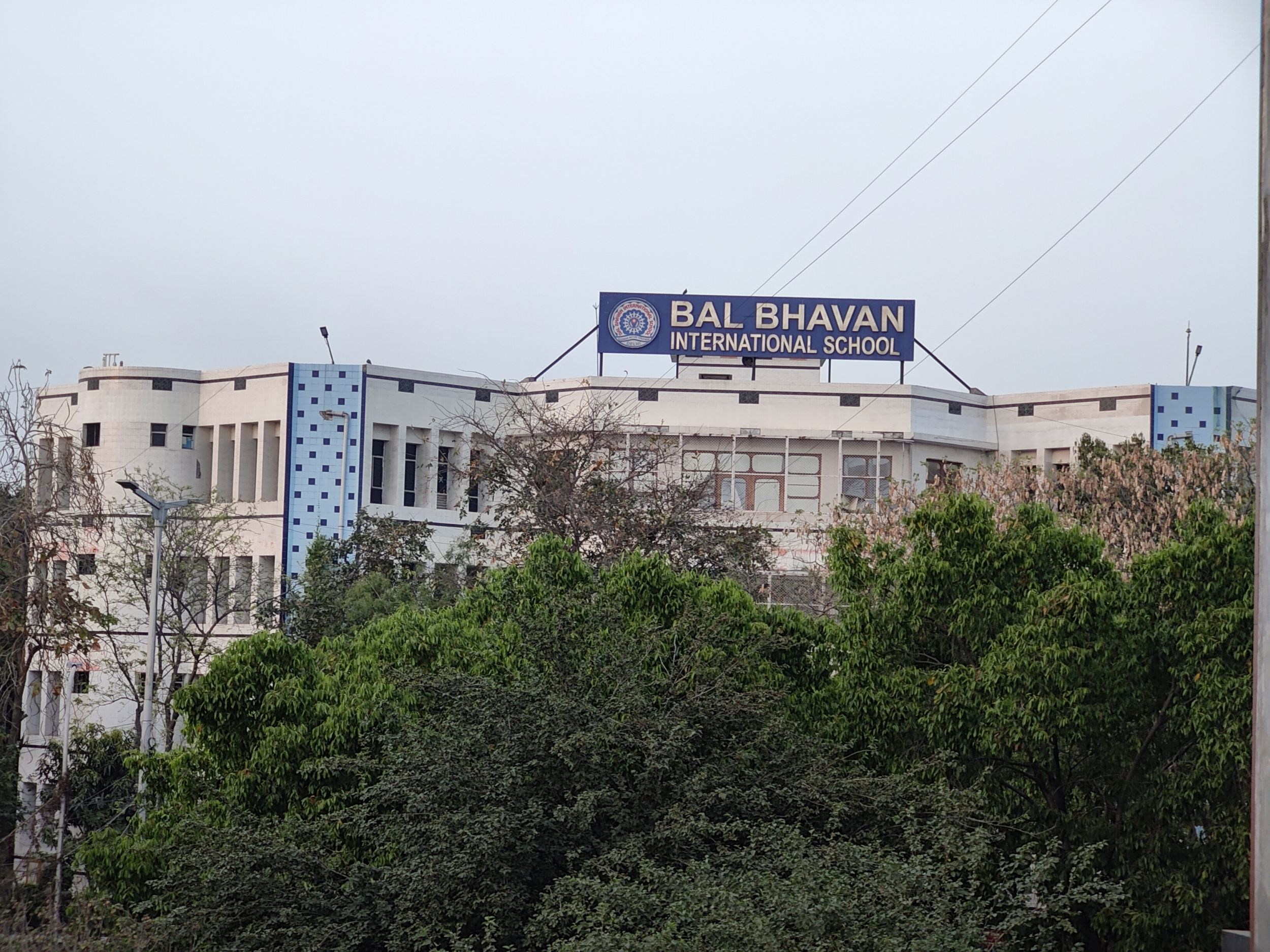

No comments:
Post a Comment